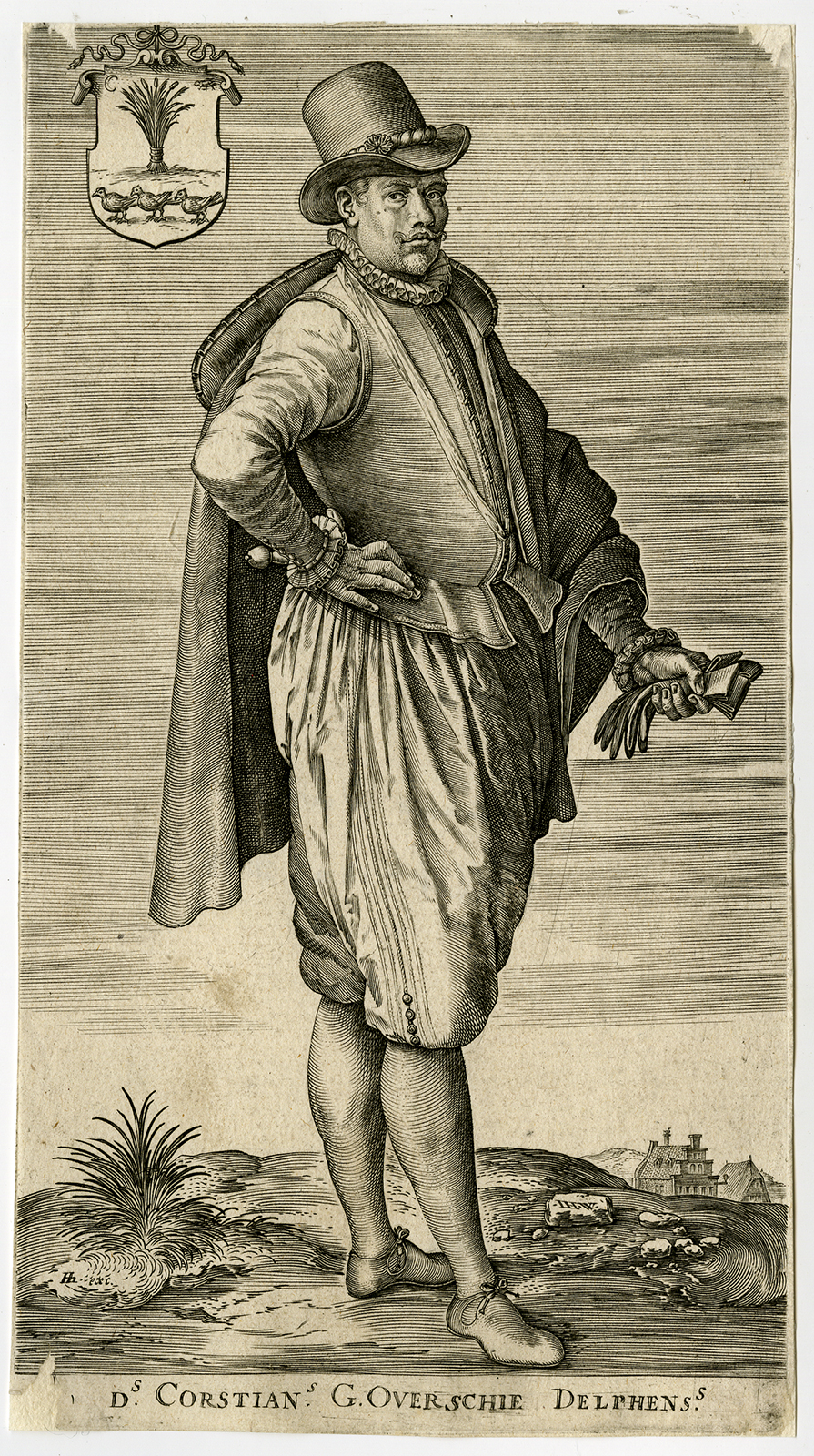Damaged Goods
Posted by Frans Laurentius on 14.03.22
Of oil stains, clipped corners and cropped captions.
Due to the low prices of graphic art in the past three centuries, not all collectors were as careful with their prints as we nowadays try to be. Currently we, like most collectors, try to find prints fresh and pristine as the day they were printed. Large margins and early, dark impressions are the preferred material. Nevertheless, everyday practice usually shows us something different.
Oil stains, clipped corners, cropped text captions, squaring by pencil (or in pen and ink, if you are unlucky), tears, writing; the list of degrading elements seems endless.
Good examples are these two prints by Johannes Wierix:
Both portraits are quite rare, but neither in the condition we would like to see them. In one case (left) a ruthless owner clipped off the corners, probably because these were already damaged. The other print (right) shows how the first might have looked before clipping. These small damages in the corners are typically a result of the print being mounted in an album or on a carrier sheet, and subsequently carelessly removed from said carrier or album page.
We recently acquired a large collection of 16th century material. In this collection we found a very rare engraving by Crispijn van den Broeck, an engraver from Antwerp. After a hard life, including some loss of image, around 1640 an anonymous owner took pity and remargined the print. This owner also took the time to fill in the missing parts with pen, ink and wash. Normally we would restore this according to modern standards, but since this is such an old restoration, we have chosen to leave it as is. The old restoration is an interesting element and gives us an insight into the appreciation of this print in the 17th. century.
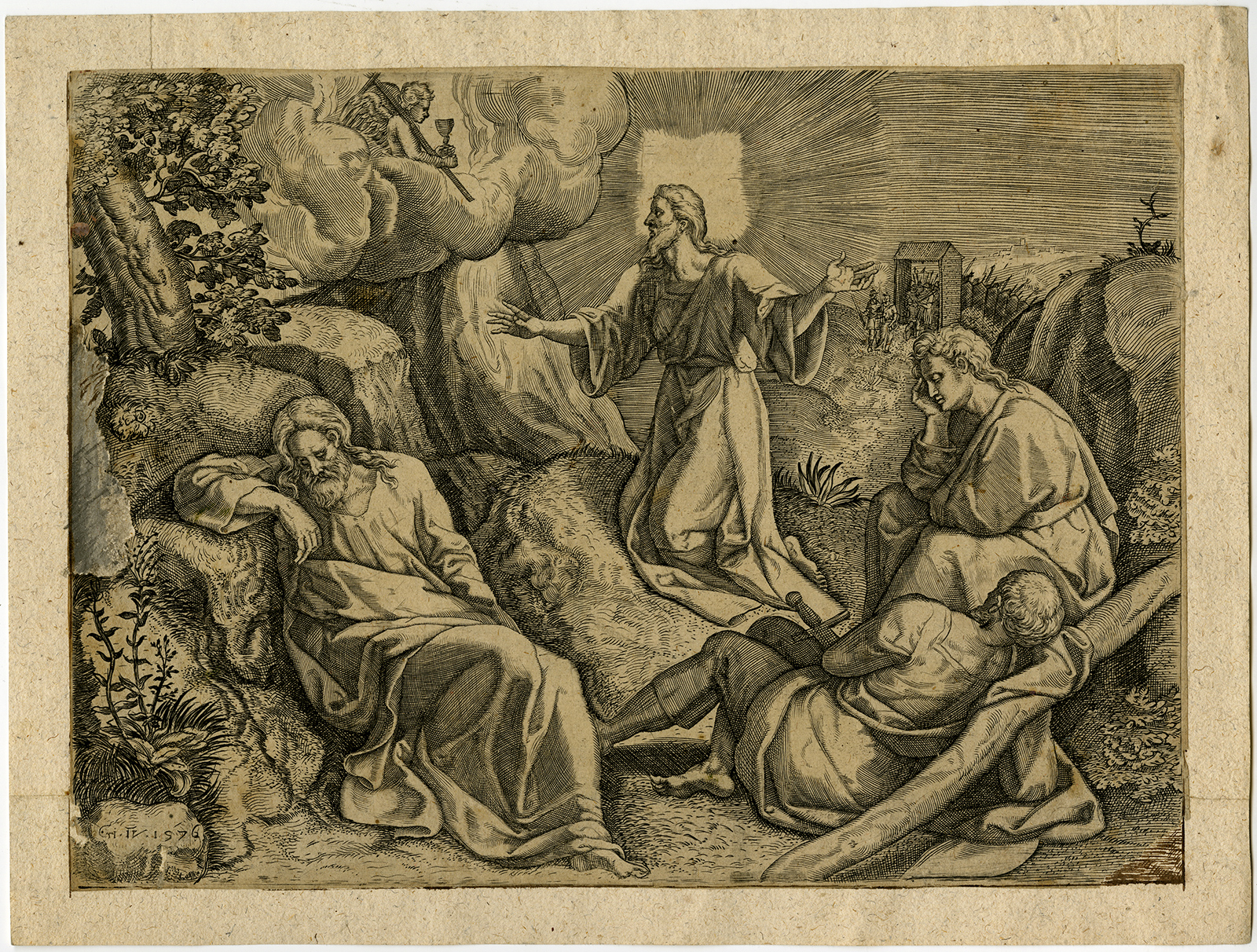
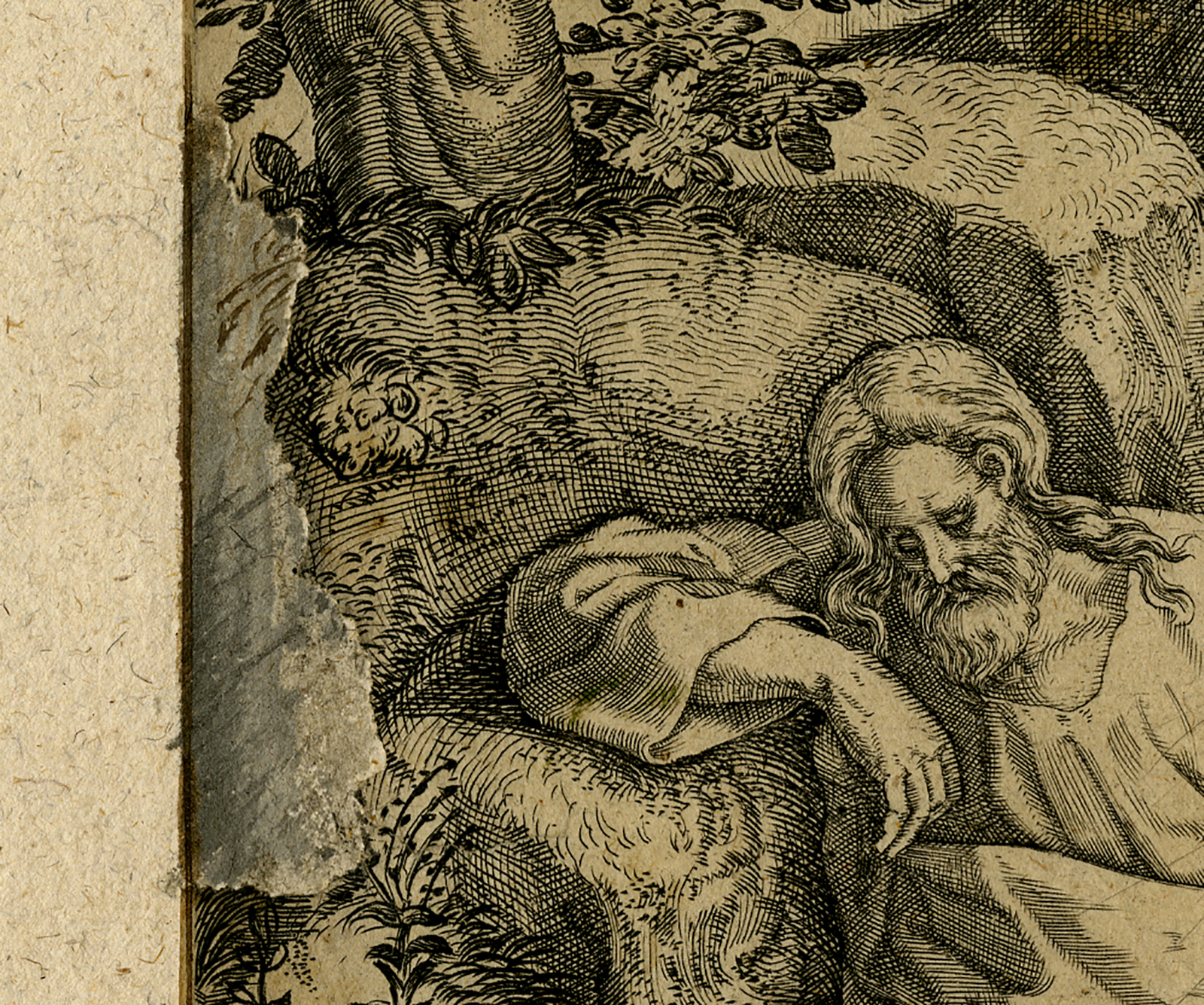
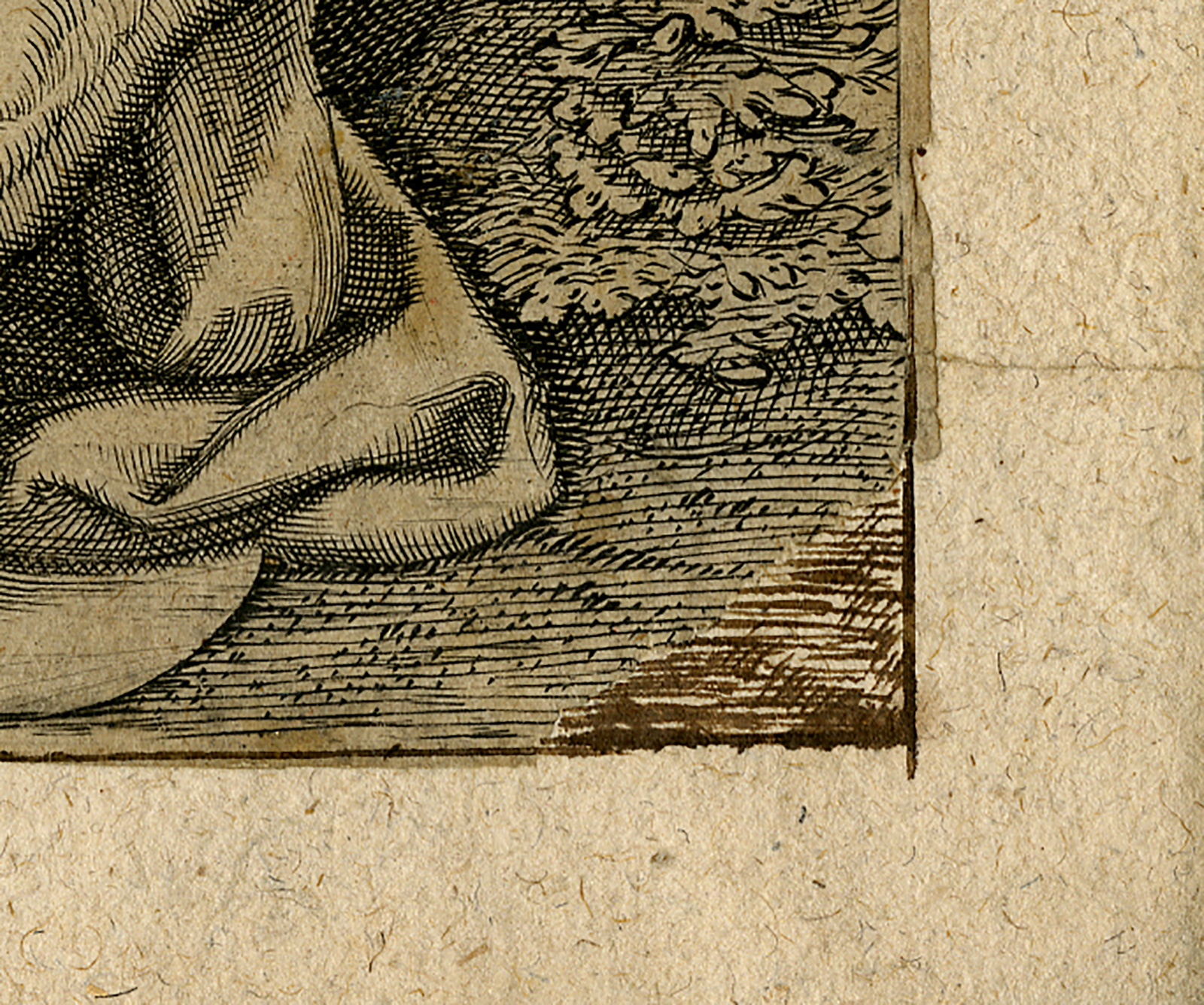
A very bold restoration can be seen in this 16th. century Italian engraving after Raphael. In this case a collector removed the (probably damaged) upper part by clipping around the top figures and replacing this with paper of a similar color. Based on the support sheet this will have been done around 1670. The presence of oil stains in this print suggests that it spent time in a painter’s studio. Artists made great use of prints, but by doing so, also destroyed a lot of graphic art.
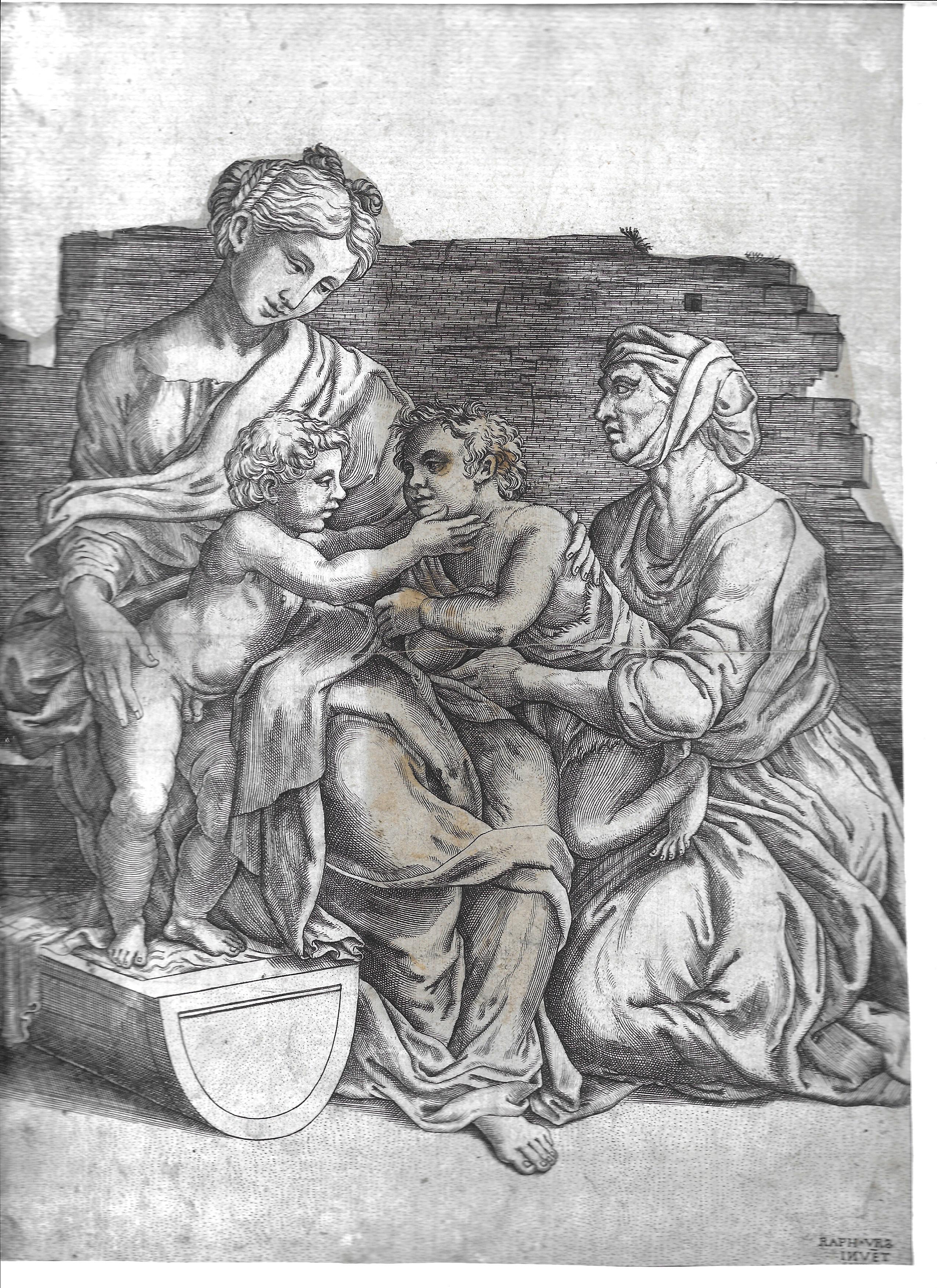
To conclude we show a piece of paper that we removed from a print. It was used to back a thin sheet of paper. It shows remnants of at least three of the prints from the famous Varie Figure Gobbi series by Jacques Callot. Someone apparently did not think much of these etchings and tore them partly off the paper. Judging by the sad remains, they must have been quite good early impressions.
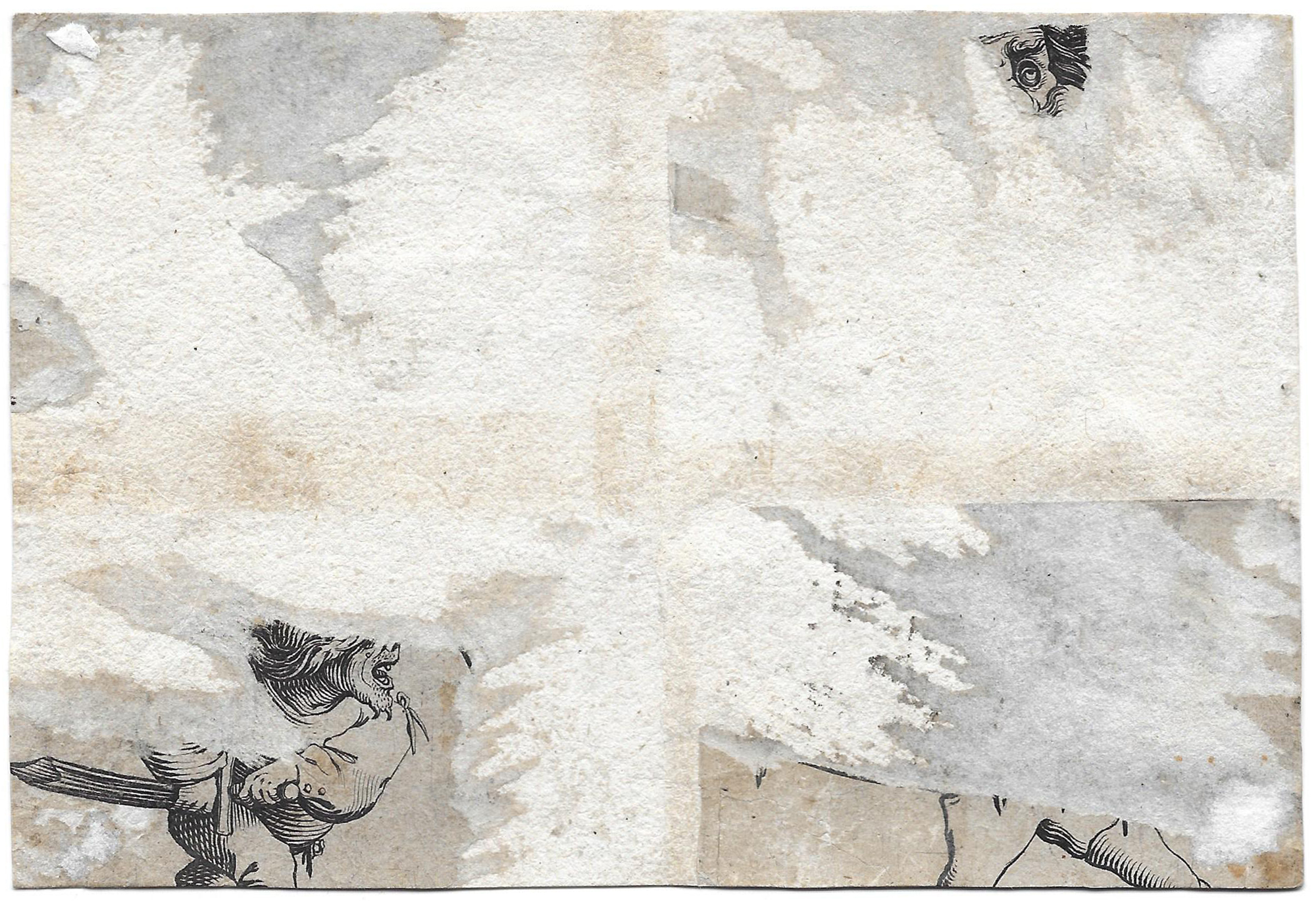
Although not in the quality we usually look for, these “damaged goods” can tell a fascinating story of the use and misuse of graphic art, as well as historical ideas about the value and appreciation of prints.

